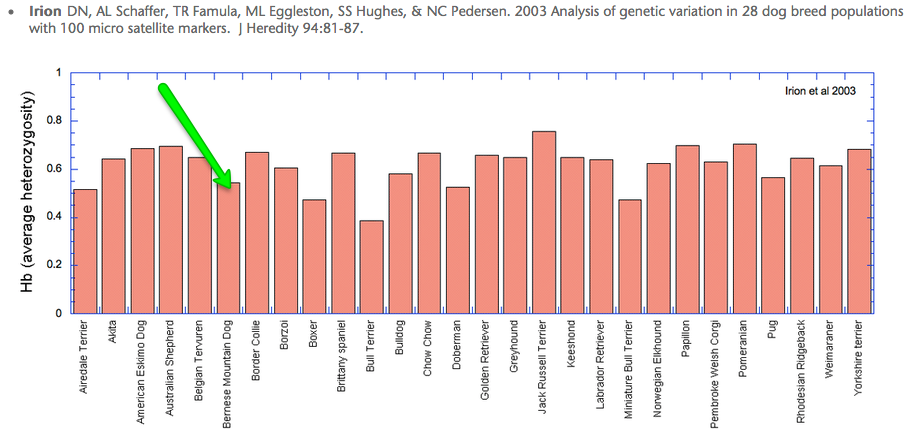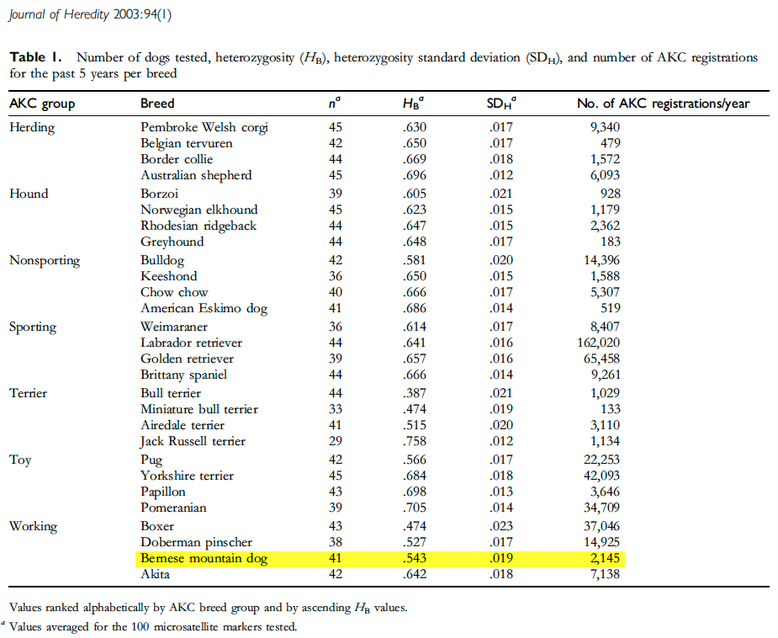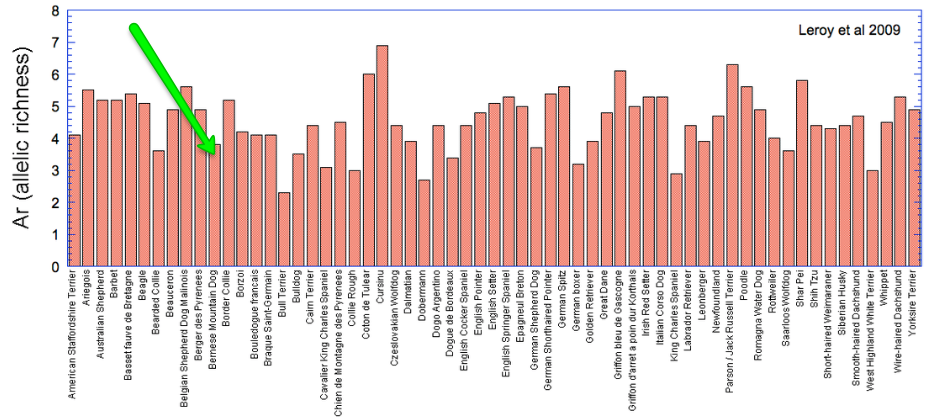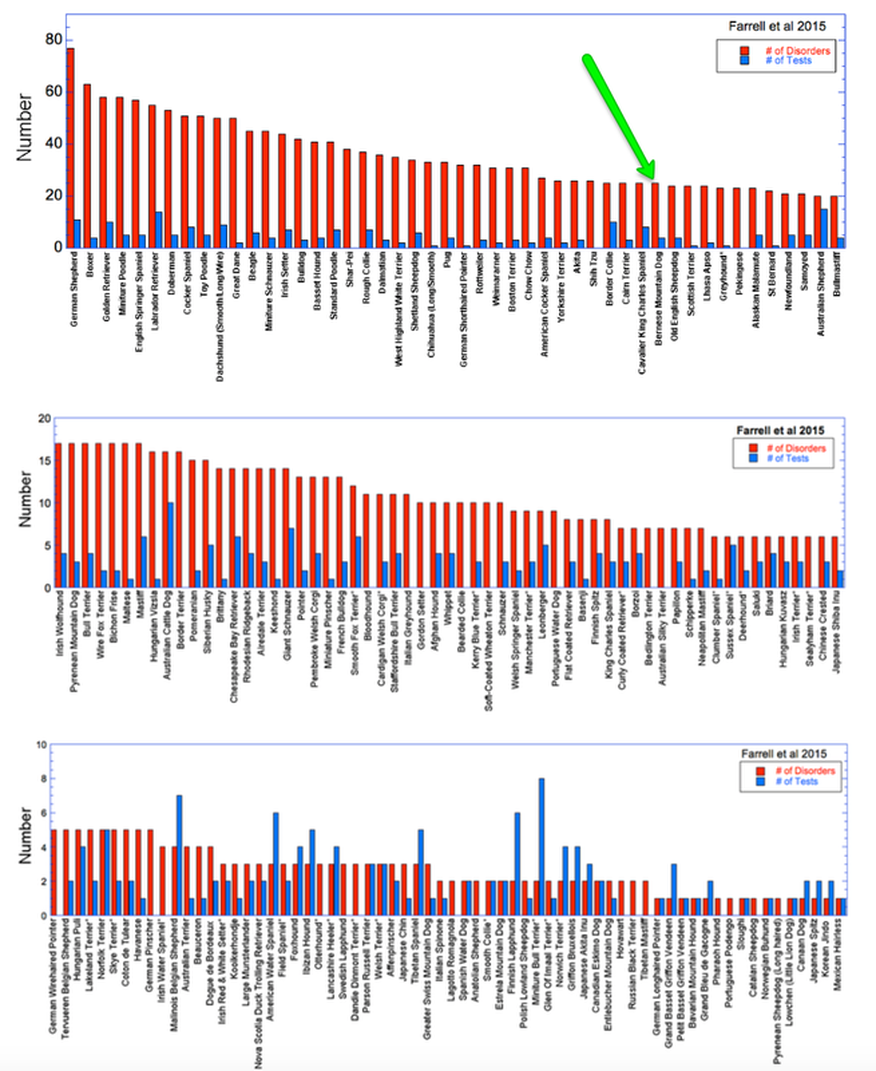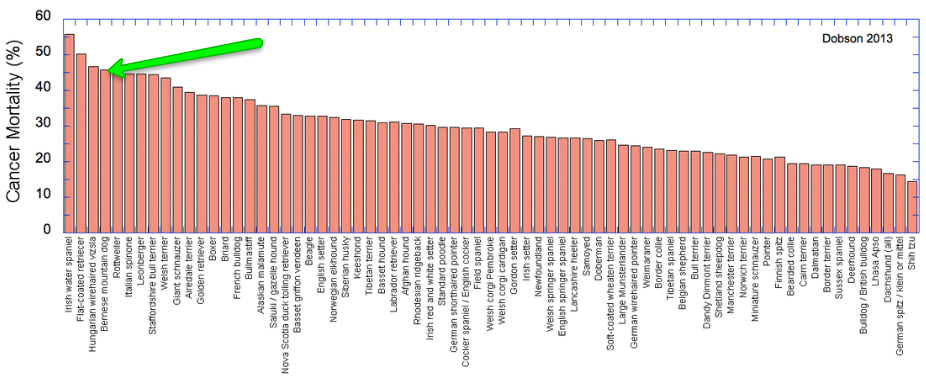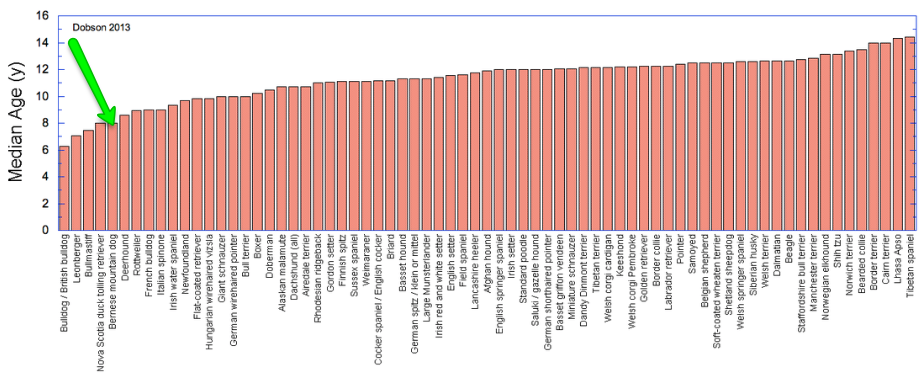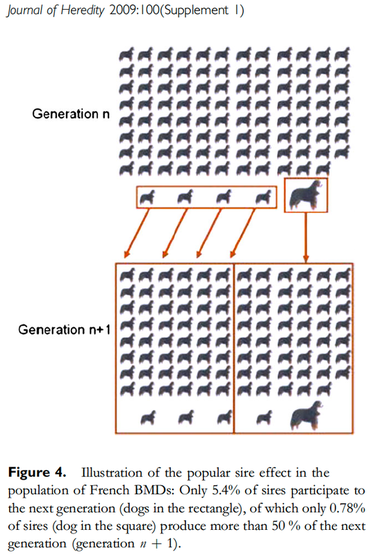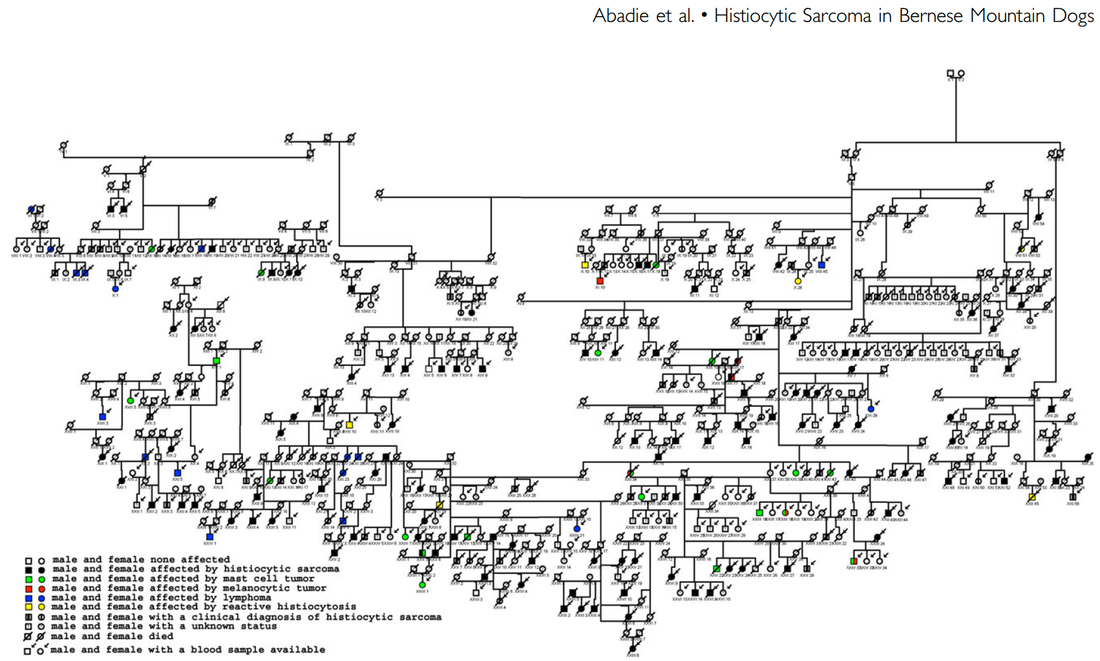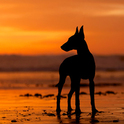BERNESE MOUNTAIN DOG
All of these graphs and their sources can be found on the appropriate pages under "Health Data" on the ICB website (and there are larger ones of the ones that are hard to read here). The graphs were drawn from data presented as tables in the published studies.
INBREEDING
Negative values indicate outbred animals (i.e., the homozygosity is less than expected from random breeding); positive values indicate inbreeding (i.e., homozygosity is greater than expected from random breeding). The arrows indicate Bernese Mtn Dog (orange) and Standard Poodle (green).
Negative values indicate outbred animals (i.e., the homozygosity is less than expected from random breeding); positive values indicate inbreeding (i.e., homozygosity is greater than expected from random breeding). The arrows indicate Bernese Mtn Dog (orange) and Standard Poodle (green).
In this study, Fst is inbreeding (lower is better). For comparison, 0.25 (25%) is the inbreeding coefficient of the offspring of full siblings. In the paper they note dogs with inbreeding levels as high as 0.5 (50%).
ALLELIC RICHNESS
Allelic richness is a measure of genetic diversity (higher is better).
Allelic richness is a measure of genetic diversity (higher is better).
NUMBER OF KNOWN GENETIC DISORDERS VS NUMBER OF AVAILABLE TESTS
This is a single, very long graph that I have broken into three. Note the y axis scale is different in each (top: 0-85; middle: 0-20; bottom: 0-10)
This is a single, very long graph that I have broken into three. Note the y axis scale is different in each (top: 0-85; middle: 0-20; bottom: 0-10)
LIFESPAN
CANCER
Data for mortality from cancer and median age at death from cancer (median means half of the animals live longer, and half of the animals have shorter lives).
Data for mortality from cancer and median age at death from cancer (median means half of the animals live longer, and half of the animals have shorter lives).
Data from
- Abadie J, B Hedan, E Cadieu, and others. 2009. Epidemiology, pathology, and genetics of histiocytic sarcoma in the Bernese Mountain dog breed. J. Hered. 100 (Suppl 1): S19-S27.
|
(pedigree analysis of 327 French and European dogs, of which 121 had diagnosis of HS).
"The pedigree derives largely from a few male ancestors who were mated multiple times. At each generation, only 5.5 % (± 0.3%) of sires and 13.2 % (± 0.3%) of dams were used for reproduction, with only 0.78% (± 0.1%) of sires and 3% (± 0.3%) of dams producing more than the half of next generation (Figure 4). For example, among male dogs born between 2000 and 2002, 3 dogs produced more than 120 puppies." |
THYROID

